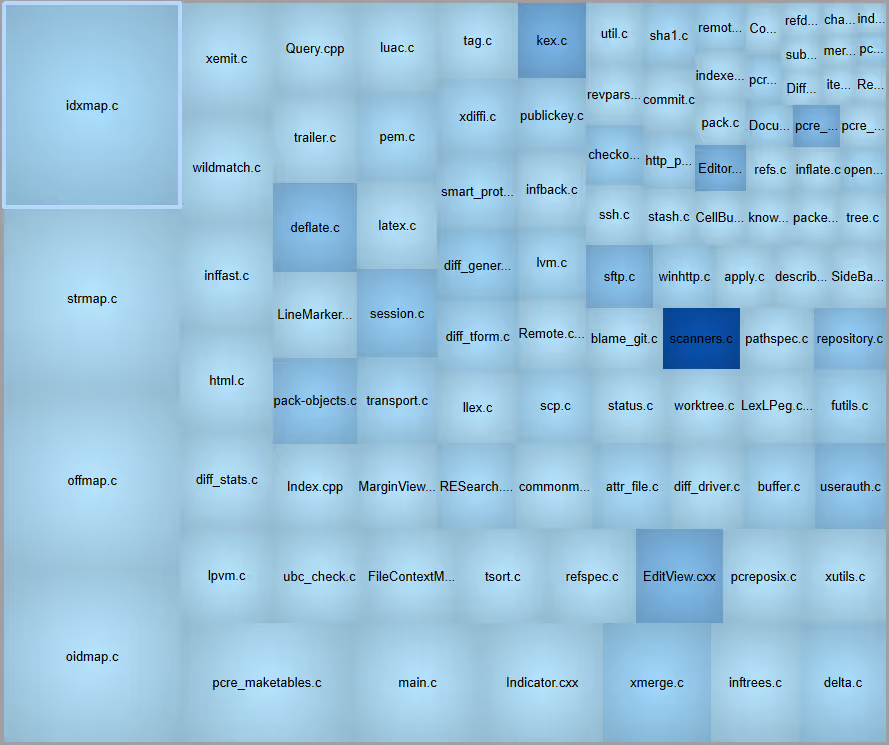Enhance software quality, optimize performance, and ensure regulatory compliance.

A Cyclomatic Complexity Treemap showing hotspots
Detect code patterns that are prone to errors with HIS metrics in Understand by SciTools. See comment density for code readability, number of call levels for code complexity, or number of calling functions for refactorability. All metrics can be setup to run automatically so you can track your progress in real time.

A Cyclomatic Complexity Treemap showing hotspots
Metric Name
Description
Comment Density “COMF“
Relationship of the number of comments (outside of and within functions) to the number of statements
Number of paths “PATH“
Number of non cyclic remark paths (i.e. minimum number of necessary cases of test)
Number of Goto Statements “GOTO“
Number of Goto Statements
Cyclomatic Complexity “v(G)“
In accordance with the Cyclomatic Number (McCabe Cyclomatic Complexity)
Number of Calling Functions “CALLING“
By how many subfunctions is this function called
Number of called functions “CALLS“
How many different functions does this function call
Number of Function Parameters “PARAM“
How complex is the function interface
Number of Instructions per function “STMT“
How complex is the function
Number of call Levels “LEVEL“
Depth of nesting of a function
Number of return points “RETURN“
Number of return points within a function
The stability index “S“
The stability index supplies a measure of the number of the changes (changes, deletions, additions) between two versions of a piece of software
Language scope “VOCF“
The language scope is an indicator of the cost of maintaining/changing functions
“NOMV“
Number of MISRA HIS Subset violations
“NOMVPR“
Number of MISRA violations per rule
Number of recursions “ap_cg_cycle“
Call graph recursions
Don't see the HIS metric you need? We can create any metric just contact [email protected]. Understand also contains over a hundred unique metrics that can boost your performance
See all metrics








Chris Rhodes, Senior Software Engineer
Dell Inc.